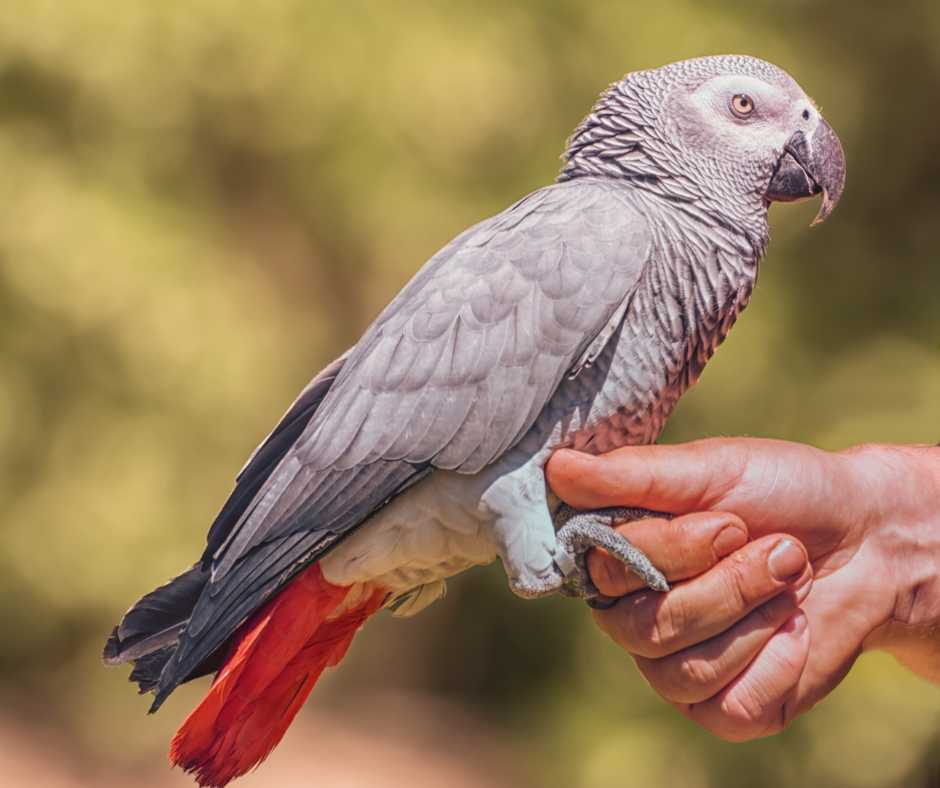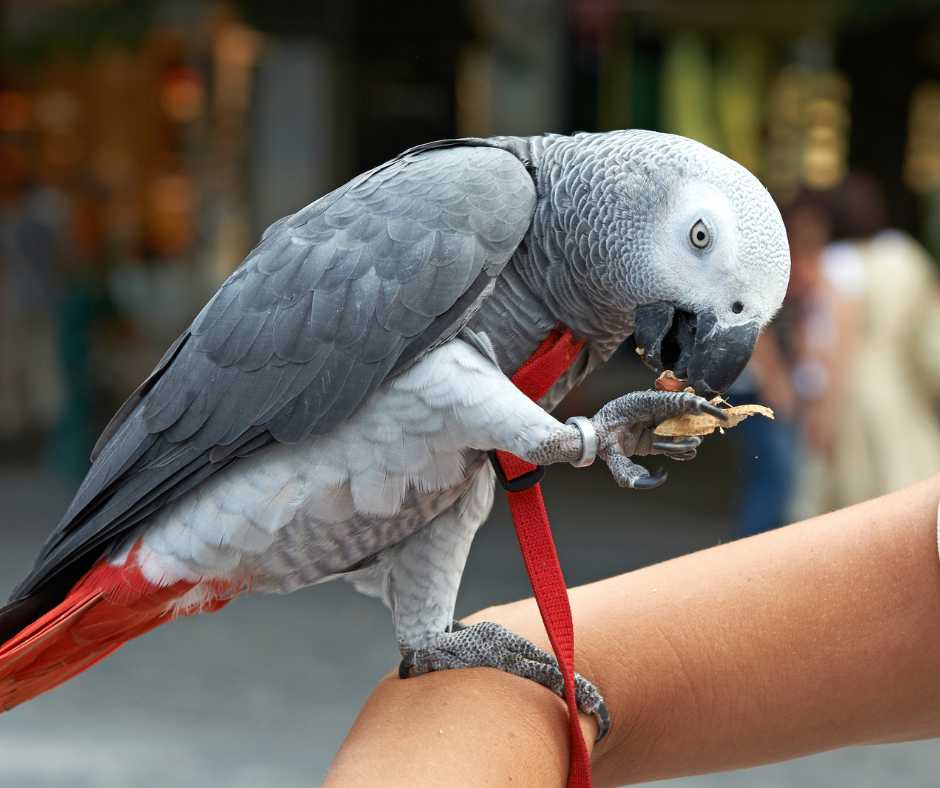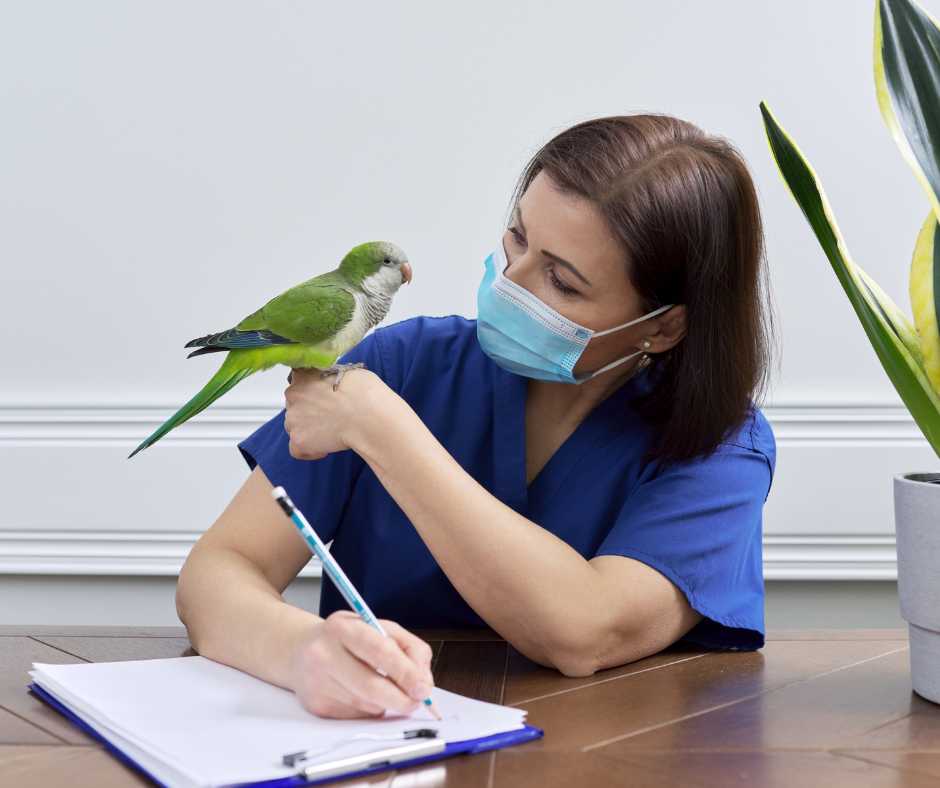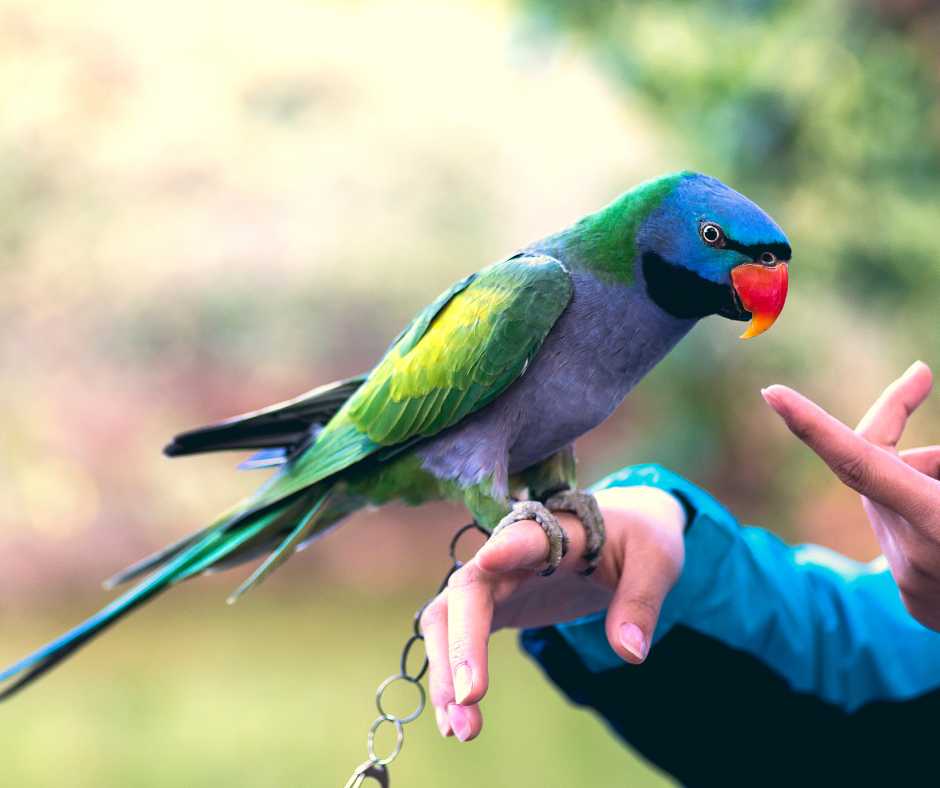Parrots can mimic human speech, turning them from pets to conversational companions and wondering how to teach your parrot to talk.
Our guide simplifies the process. Start by engaging them with fun activities or treats to spark interest. If they mimic unwanted words, gently steer them towards the desired vocabulary with positive reinforcement. Remember, patience is key—think of it as nurturing a plant.
This journey involves building a solid bond, choosing the right words, and keeping lessons brief. Ready to transform squawks into dialogue? With patience and creativity, you’re teaching your parrot to speak and deepening your connection. Let the conversation begin!
Preparing to Teach Your Parrot to Talk
Preparing to teach your parrot to talk is like setting the stage for a grand performance. It’s all about getting to know your feathery friend’s potential and creating the perfect learning space. Let’s dive in!
Understanding Your Parrot’s Ability to Learn
Think of parrots as the linguists of the bird world. Not all of them will chat your ear off, but species like African Greys, Budgerigars, and some Amazons are the Shakespearean of parrot speech. Knowing what your bird is capable of can make your teaching journey smoother.
For a closer look at these chatty species, The Spruce Pets is a treasure trove of information. It’s like knowing if you’re working with a budding poet or a strong silent type—both excellent, just different.
Setting Up a Conducive Learning Environment
Have you ever tried to concentrate in a noisy room? It’s tough! Parrots feel the same. Creating a calm, comfy spot where you both can focus is key. Imagine crafting a little oasis of tranquility in your home—a special nook where words and whispers turn into parrot talk magic. It’s not about the quiet, though.
Think about where you’re placing their cage. You want it somewhere lively enough that they feel part of the family but away from the hustle and bustle that could distract them from their lessons.
Remember, setting up for success isn’t about the physical space. It’s about understanding your parrot’s unique personality and speech potential and then crafting an environment that encourages learning. Like any good teacher, you’re creating a classroom that’s as unique and special as your feathered student.
Read more: How to Train a Parrot

So, grab that birdie dictionary, and let’s make your parrot the most eloquent bird on the block!
6 Steps to Teach Your Parrot to Talk
Establish a bond by spending quality time together to teach a parrot to talk. Start with simple words like “Hello” or “Bye,” and use repetition for consistency. Reward efforts with treats for positive reinforcement. Gradually expand vocabulary and keep practice sessions short and engaging for best results.
Let’s walk through these steps, shall we?
Establishing a Strong Bond
First, your parrot must see you as their trusty sidekick before any real magic happens. Spending quality time together, sharing gentle pets, and being there makes all the difference. It’s like building a friendship; you want your parrot to know you’re in this together.

Choosing the Right Words and Phrases
Now, onto the script. Starting with easy peasy words like “Hello” or “Bye” sets the stage. These aren’t words but the building blocks of your parrot’s vocabulary. Think of it as teaching a kiddo their first words. You want them to be simple, sweet, and straight to the point.
Utilizing Repetition and Consistency
Ever heard someone say repetition is the mother of learning? Well, they weren’t kidding, especially when it comes to parrots. Repeating those key phrases in your daily parrot pow-wows ingrains them into their feathery little heads. It’s all about consistency—like your favorite TV show theme song, you can’t get out of your head.
Incorporating Rewards and Positive Reinforcement
Caught your parrot trying to say “Hello“? Time to break out the confetti—or, more realistically, their favorite treat. This isn’t about cheering; it’s about making each effort worthwhile. Positive vibes ensure your parrot knows they’re on the right track.
Expanding Vocabulary Gradually
As your parrot gets comfy with the basics, introduce new words to the mix. It’s akin to adding more colors to your painting; slowly but surely, the picture becomes more vivid and complex. But remember, patience is key. We’re painting a masterpiece, not scribbling a doodle.

Practicing Daily and Keeping Sessions Short
Short and sweet does the trick. Long training marathons might make your parrot want to fly the coop. Instead, opt for brief, engaging sessions that fit their birdie attention span. It keeps things fun and prevents any feathery frustrations from bubbling up.
By walking through these steps with a blend of patience, consistency, and a sprinkle of creativity, you’re not teaching your parrot to talk. You’re opening up a new world of interaction between you and your feathered friend. So, take it one word at a time; before you know it, you’ll have full-blown conversations. Who knew parrot talk could be this fun?
You may also read: How to Teach a Budgie to Talk
Overcoming Common Challenges
Training a parrot to talk is like teaching a toddler to tie their shoes. Sometimes, they’re all in, eager and excited. Other times, you might find them staring at you like you’ve asked them to solve a complex math problem. But fear not! Every challenge in this journey is a step towards a deeper connection with your feathered friend.
Dealing with Reluctance or Lack of Interest
So, your parrot is giving you the cold shoulder, huh? They may be more interested in their reflection than repeating your carefully chosen words. It’s alright. The key here is to make learning as fun as playing their favorite game. Try associating words with their favorite activities or treats. Before you know it, they’ll be gabbing away, all because you made it worth their while.
Correcting Mistakes and Managing Unwanted Behaviors
Everyone slips up—even our parrot pals. Have you picked up a word you wish they hadn’t? It happens to the best of us. The trick is not to make a big deal out of it. Instead, shower them with attention and treats when they get it right. Think of it as nudging them back on track, with lots of smiles and encouragement along the way.
Maintaining Patience and Adjusting Expectations
Remember, Rome wasn’t built in a day, and your parrot will only become a chatterbox after a while. Progress might be slow, but every little step forward is a victory worth celebrating. Keep those expectations realistic, and cherish breakthrough moments, no matter how small. It’s those tiny triumphs that make the journey worthwhile.

Teaching your parrot to talk is more than about the words. It’s about building a bond, understanding each other, and enjoying the ride. So, take a deep breath, arm yourself with patience and positivity, and prepare for one of your life’s most rewarding adventures. Who knows? Your parrot might surprise you with their next word.
People Also Asked
What’s the most straightforward word when teaching my parrot to talk?
“Hello” is generally the go-to word. It’s straightforward and a standard part of daily interactions.
How long will it take for my parrot to start talking?
It varies widely. Some parrots may begin mimicking sounds in a few weeks, while others might take longer.
Can older parrots learn to talk?
Absolutely. While younger parrots may learn quicker, older parrots can also learn with patience and consistent training.
Do parrots understand the words they say?
Parrots can associate words with actions or objects, but whether they grasp human language as we do is still a topic of discussion.
What should I do if my parrot learns a swear word?
Avoid reacting to the word. Instead, reinforce the words and phrases you want them to replicate. Over time, they will likely drop the undesired word from their vocabulary.
Wrap Up
Starting the journey of teaching your parrot to speak is pretty exciting, like riding a rollercoaster with lots of ups and downs. But keep at it, throw in some fun ideas, and don’t forget to be patient. You’ll find yourself getting closer to your feathered buddy. This whole thing isn’t about getting them to talk; it’s also about strengthening your bond, which is super cool.

